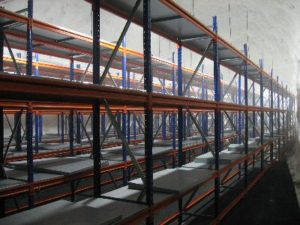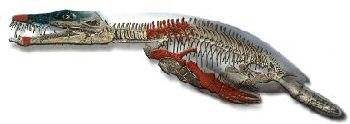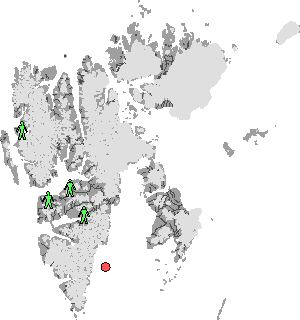-
current
recommendations- Liefdefjord
New page dedicated to one of Spitsbergen's most beautiful fjords. Background information and many photos.
- New Spitsbergen guidebook
The new edition of my Spitsbergen guidebook is out and available now!
- Liefdefjord
New page dedicated to one of Spitsbergen's most beautiful fjords. Background information and many photos.
Seitenstruktur
-
Spitsbergen-News
- Select Month
- April 2024
- March 2024
- February 2024
- January 2024
- December 2023
- November 2023
- October 2023
- September 2023
- August 2023
- July 2023
- June 2023
- May 2023
- April 2023
- March 2023
- February 2023
- January 2023
- December 2022
- November 2022
- October 2022
- September 2022
- August 2022
- July 2022
- June 2022
- May 2022
- April 2022
- March 2022
- February 2022
- January 2022
- December 2021
- November 2021
- October 2021
- September 2021
- August 2021
- July 2021
- June 2021
- May 2021
- April 2021
- March 2021
- February 2021
- January 2021
- December 2020
- November 2020
- October 2020
- September 2020
- August 2020
- July 2020
- June 2020
- May 2020
- April 2020
- March 2020
- February 2020
- January 2020
- December 2019
- November 2019
- October 2019
- September 2019
- August 2019
- July 2019
- June 2019
- May 2019
- April 2019
- March 2019
- February 2019
- January 2019
- December 2018
- November 2018
- October 2018
- September 2018
- August 2018
- July 2018
- June 2018
- May 2018
- April 2018
- March 2018
- February 2018
- January 2018
- December 2017
- November 2017
- October 2017
- September 2017
- August 2017
- July 2017
- June 2017
- May 2017
- April 2017
- March 2017
- February 2017
- January 2017
- December 2016
- November 2016
- October 2016
- September 2016
- August 2016
- July 2016
- June 2016
- May 2016
- April 2016
- March 2016
- February 2016
- January 2016
- December 2015
- November 2015
- October 2015
- September 2015
- August 2015
- July 2015
- June 2015
- May 2015
- April 2015
- March 2015
- February 2015
- January 2015
- December 2014
- November 2014
- October 2014
- September 2014
- August 2014
- July 2014
- June 2014
- May 2014
- April 2014
- March 2014
- February 2014
- January 2014
- December 2013
- November 2013
- October 2013
- September 2013
- August 2013
- July 2013
- June 2013
- May 2013
- April 2013
- March 2013
- February 2013
- January 2013
- December 2012
- November 2012
- October 2012
- September 2012
- August 2012
- July 2012
- June 2012
- May 2012
- April 2012
- March 2012
- February 2012
- January 2012
- December 2011
- November 2011
- October 2011
- September 2011
- August 2011
- May 2011
- April 2011
- March 2011
- February 2011
- January 2011
- December 2010
- November 2010
- September 2010
- August 2010
- July 2010
- June 2010
- May 2010
- April 2010
- March 2010
- February 2010
- November 2009
- October 2009
- August 2009
- July 2009
- June 2009
- May 2009
- April 2009
- March 2009
- February 2009
- January 2009
- December 2008
- November 2008
- October 2008
- August 2008
- July 2008
- June 2008
- May 2008
- April 2008
- March 2008
- February 2008
- April 2000
- Select Month
-
weather information

| THE Spitsbergen guidebook |
Home → February, 2008
Monthly Archives: February 2008 − News & Stories
Seed vault officially opened
On 26 February the new seed vault or “Doomsday Vault” as it is often called by the press was officially opened. Located near Longyearbyen, it is supposed to be able to survive global catastrophes including nuclear wars, direct missile attacks and extreme climate change. The purpose is to store seeds of agricultural plants to preserve their diversity for future generations in times of massive loss of biodiversity that we currently experience. The seed vault is Spitsbergen’s biggest media issue since the Italia-catastrophe in 1928.
Entrance to the seed vault.
Deep in the mountain: the seed vault.
© both photos: Mari Tefre/Global Crop Diversity.
For more information, see: Global Crop Diversity Trust
Spectacular finds of dinosaur skeleton remains in the Isfjord area
Parts of dinosaur bones from Isfjord have been known since the early 20th century, but things really started to happen when Norwegian palaentologists found remains of no less than 28 individual marine reptiles near Diabasodden (Tempelfjord in Isfjord), dating to the Jurassic (about 150 million years old). Most of them are Ichthyosaurs that looked more or less similar to dolphins, others are Plesioraurs, larger predative reptiles. One Pliosaur (subgroup of Plesiosaurs) must have been 15 metres long and is thus the largest of its kind that has been found so far, as has recently been announced.
Skeleton of the “monster”, as the 15 m large Pliosaur is inofficially called. Only the red parts have been found.
Pliosaur having breakfast, as “seen” by an artist.
Field work at Knorringfjellet.
Earthquake in Storfjord
Many inhabitants of Longyearbyen woke up in the early night on 20 February, when an earthquake made houses shake noticeably at 03.46 am. Damage or injuries did not occur. The epicentre was in Storfjord near the southeastern coast of Spitsbergen, about 120 km away from Longyearbyen, near a geological fault that may have been re-activated due to stress caused by movements at the middle Atlantic ridge system that is dividing the bottom of the ocean into two different tectonic plates in the Fram Strait (between Spitsbergen and Greenland). The earthquake was recorded with 6.2 on the Richter scale – more than enough to cause damage if it had happened on land in a more densely populated area. The event is quite exceptional, as Spitsbergen is seismologically mostly quite calm, as opposed to Iceland, which is situated directly on top of the middle Atlantic ridge.
In March 2008, some minor cracks have been found at some buildings in Longyearbyen, which are believed to date back to the earthquake.
The approximate position of the epicentre is marked with a red dot. Green symbols show the active settlements.
(© Karte Rolf Stange)
For more information, see: Norwegian Polar institute
News-Listing live generated at 2024/April/19 at 21:15:31 Uhr (GMT+1)































